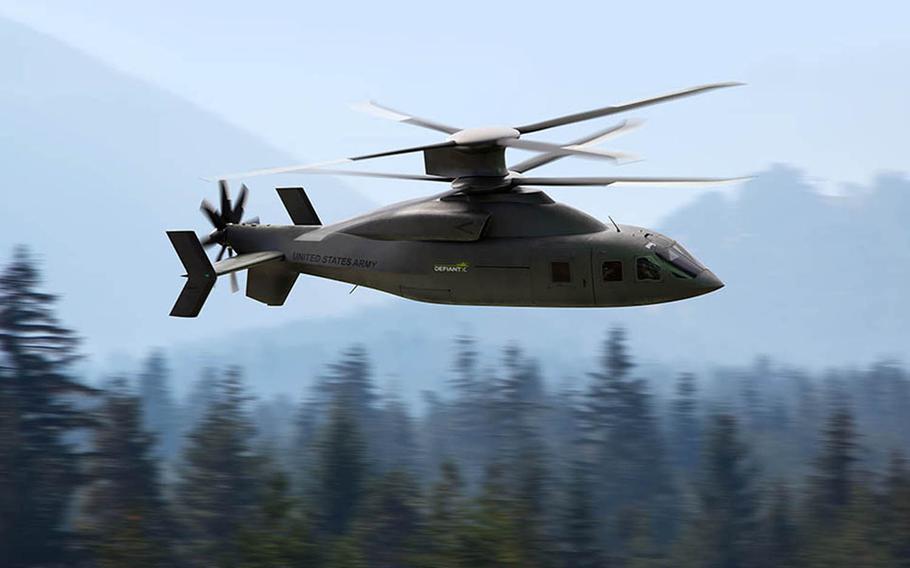
Boeing says its Defiant X helicopter, developed with Sikorsky, is capable of flying low and fast to bring troops where needed while evading adversaries over complex terrain. (Boeing Co.)
Boeing Co. and Sikorsky unveiled their plan Monday to replace the aging fleet of UH-60 Black Hawk helicopters as the Army’s long-range assault aircraft of the future.
The joint team’s Defiant X helicopter is capable of flying low and fast to bring troops where needed while evading adversaries over complex terrain, according to the Boeing website.
The Army is expected to call for final submissions to its Future Long Range Assault Aircraft competition later this year and may award contracts in 2022, according to a Boeing statement Monday. The competition is part of the Army’s broader Future Vertical Lift initiative to upgrade the Black Hawks, AH-64 Apache attack helicopters and other aircraft, including the RQ-7 Shadow drone.
The Army chose the Boeing-Sikorsky proposal and another by Bell Textron, the V-280 Valor, as finalists in the assault helicopter competition last year, according to Popular Mechanics in March. It reported the Army may field the winning design by 2030.
The two aircraft are much different. The Defiant X is built with a pair of contra-rotating overhead blade assemblies and a pusher propeller in the rear. The Valor is a tilt-rotor design that resembles the V-22 Osprey built by Bell and Boeing.
The Defiant X flies twice as far and twice as fast as a Black Hawk, which cruises at 173 mph, according to Boeing. It also includes X2 Technology by Sikorsky that allows it to operate at high speeds while maintaining the handling qualities of lower speeds.
“This critical capability provides soldiers with increased maneuverability and survivability in high-threat air defense environments, allowing them to penetrate enemy defenses while reducing exposure to enemy fire," said a Boeing statement Monday.
The companies say the aircraft will be "the fastest, most maneuverable and most survivable assault helicopter in history."
A Boeing spokeswoman did not respond to emails Tuesday from Stars and Stripes. An Army Future Vertical Lift spokesman addressed modernization but not the Defiant X specifically.
Defiant X features a modified exhaust system that reduces its heat signature and a tricycle-style landing gear that improves stability in landing and taxiing in austere environments, Military.com reported Monday, citing Boeing officials.
Company officials declined to reveal Defiant X's maximum speed, the military news website reported; however, the SB-1 Defiant hit 267 mph maximum speed in descent, according to the Military.com report.
Sikorsky, a subsidiary of Lockheed Martin, built the Black Hawk, of which the Army has 2,135 in service, according to Lockheed Martin’s website. Boeing is responsible for the Chinook and Apache helicopters. Between them, the two defense contractors claim responsibility for building 90% of the Army’s rotorcraft fleet.
burke.matt@stripes.com Twitter: @MatthewMBurke1